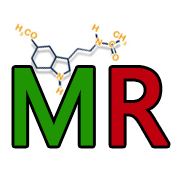Injectable melatonin: an anti-cancer and anti-viral treatment option
Abstract
Intravenous infusion of high doses of melatonin would represent the most eligible route to treat conveniently patients hospitalized in critical care units or with undergoing oncologic therapies, wherein adequate, accurate and constant dosages and high levels of melatonin would be required. After several attempts, a stable concentrate bulk solution of 10% melatonin (Survivis®) has been successfully achieved. The injectable route is also referred for lifethreatening injuries.
References
2. Acuña-Castroviejo D, Escames G, Venegas C, et al. (2014). Extrapineal melatonin: sources, regulation, and potential functions. Cell Mol. Life Sci. 71: 2997–3025. doi: https://doi.org/10.1007/s000 18-014-1579-2.
3. Reiter RJ, Mayo JC, Tan DX, et al. (2016). Melatonin as an antioxidant: under promises but over delivers. J. Pineal Res. 61: 253–278. doi: https://doi.org/10.1111/jpi.12360.
4. Reiter RJ, Gultekin F, Manchester LC, et al. (2006). Light pollution, melatonin suppression and cancer growth. J. Pineal Res. 40: 357–358. doi: https://doi.org/10.1111/j.1600-079X.2006.00325.x.
5. Galano A, Reiter RJ (2018). Melatonin and its metabolites versus oxidative stress: from individual actions to collective protection. J. Pineal Res. 65: e12514. doi: https://doi.org/10.1111/jpi.12514.
6. Nogueira LM, Sampson JN, Hsing AW (2013). Individual variations in serum melatonin levels through time: implications for epidemiologic studies. PLOS ONE. 8: e83208. doi: https://doi.org/ 10.1371/j.pone.0083208.
7. Li G, Li L, Yin D (2005). A novel observation: Melatonin’s interaction with malondialdehyde. Neuroendocrinol. Lett. 26: 61-66. ISSN 0172–780X
8. Li Y, Li S, Zhou Y, et al. (2017). Melatonin for the prevention and treatment of cancer. Oncotarget 8: 39896–39921. doi: https://doi.org/10.18632/oncotarget.16379.
9. Ushio-Fukai M and Nakamura Y (2008). Reactive oxygen species and angiogenesis: NADPH oxidase as target for cancer therapy. Cancer Lett. 266: 37-52. doi: https://doi.org/10.1016/j.canlet.2008.02.044.
10. Frezzetti D, Gallo M, Maiello MR, D'Alessio A, et al. (2017). VEGF as a potential target in lung cancer. Expert Opin. Ther. Targets 21: 959-966. doi: https://doi.org/10.1080/14728222.2017.1371137.
11. Wang Z, Dabrosin C, Yin X, et al. (2015). Broad targeting of angiogenesis for cancer prevention and therapy. Semin. Cancer Biol. 35: S224-S243. doi: https://doi.org/10.1016/j.semcancer.2015.01.001.
12. Cheng J Yang HL, Gu CJ, et al. (2019). Melatonin restricts the viability and angiogenesis of vascular endothelial cells by suppressing HIF-1α/ROS/VEGF. Int. J. Mol. Sci. 43: 945-955. doi: https://doi.org/10.3892/ijmm 2018.4021.
13. Kasi R, Ling Yeo P, Yen Ng K, et al. (2019). Melatonin induces apoptosis and inhibits the proliferation of cancer cellsvia reactive oxygen species-mediated MAPK and mTOR pathways. Clinical Cancer Drugs 6: 1-14. DOI: https://doi.org/10.2174/2212697X06666191116151114
14. Lissoni P, Rovelli F, Brivio F, et al. (2018). Five year-survival with high-dose melatonin and other antitumor pineal hormones in advanced cancer patients eligible for the only palliative therapy. Res. J. Oncol. 2: 1-7.
15. Tan DX, Korkmaz A, Reiter RJ, et al. (2014). Ebola virus disease: potential use of melatonin as a treatment. J. Pineal Res. 57 (4): 381-384. doi: 10.1111/jpi.12186.
16. Anderson G, Maes M, Markus RP, et al. (2015). Ebola virus: melatonin as a readily available treatment option. J. Med. Virol. 87 (4): 537-543. doi: 10.1002/jmv.24130.
17. Junaid A, Tang H, Abouleila Y, et al. (2020). Ebola hemorrhagic shock syndrome-on-a-chip. iScience 23 (1): 100765. https://doi.org/ 10.1016/j.isci.2019.100765.
18. Boga JA, Coto-Montes A, Rosales-Corral SA. et al. (2012). Beneficial actions of melatonin in the management of viral infections: a new use for this "molecular handyman"? Rev. Med. Virol. 22 (5):323-38. doi: 10.1002/rmv.1714.
19. Paul, S., Naaz, S., Ghosh, A., Mishra, S., Chattopadhyay, A. and Bandyopadhyay, D. (2018). Melatonin chelates iron and binds directly with phenylhydrazine to provide protection against phenylhydrazine induced oxidative damage in red blood cells along with its antioxidant mechanisms: an in vitro study. Melatonin Research. 1 (1): 1-20. https://doi.org/10.32794/mr11250001.


This work is licensed under a Creative Commons Attribution 4.0 International License.
For all articles published in Melatonin Res., copyright is retained by the authors. Articles are licensed under an open access Creative Commons CC BY 4.0 license, meaning that anyone may download and read the paper for free. In addition, the article may be reused and quoted provided that the original published version is cited. These conditions allow for maximum use and exposure of the work, while ensuring that the authors receive proper credit.
In exceptional circumstances articles may be licensed differently. If you have specific condition (such as one linked to funding) that does not allow this license, please mention this to the editorial office of the journal at submission. Exceptions will be granted at the discretion of the publisher.


